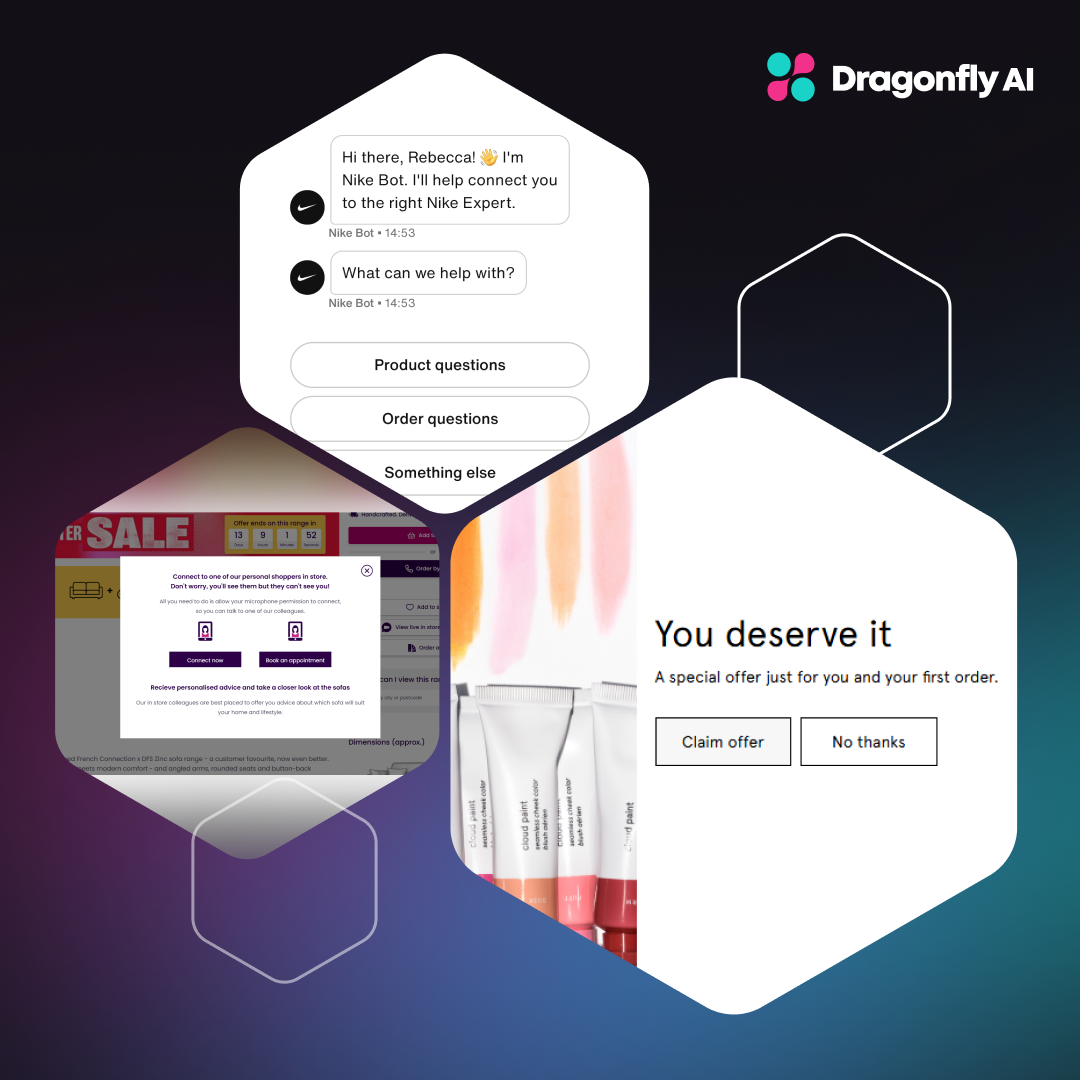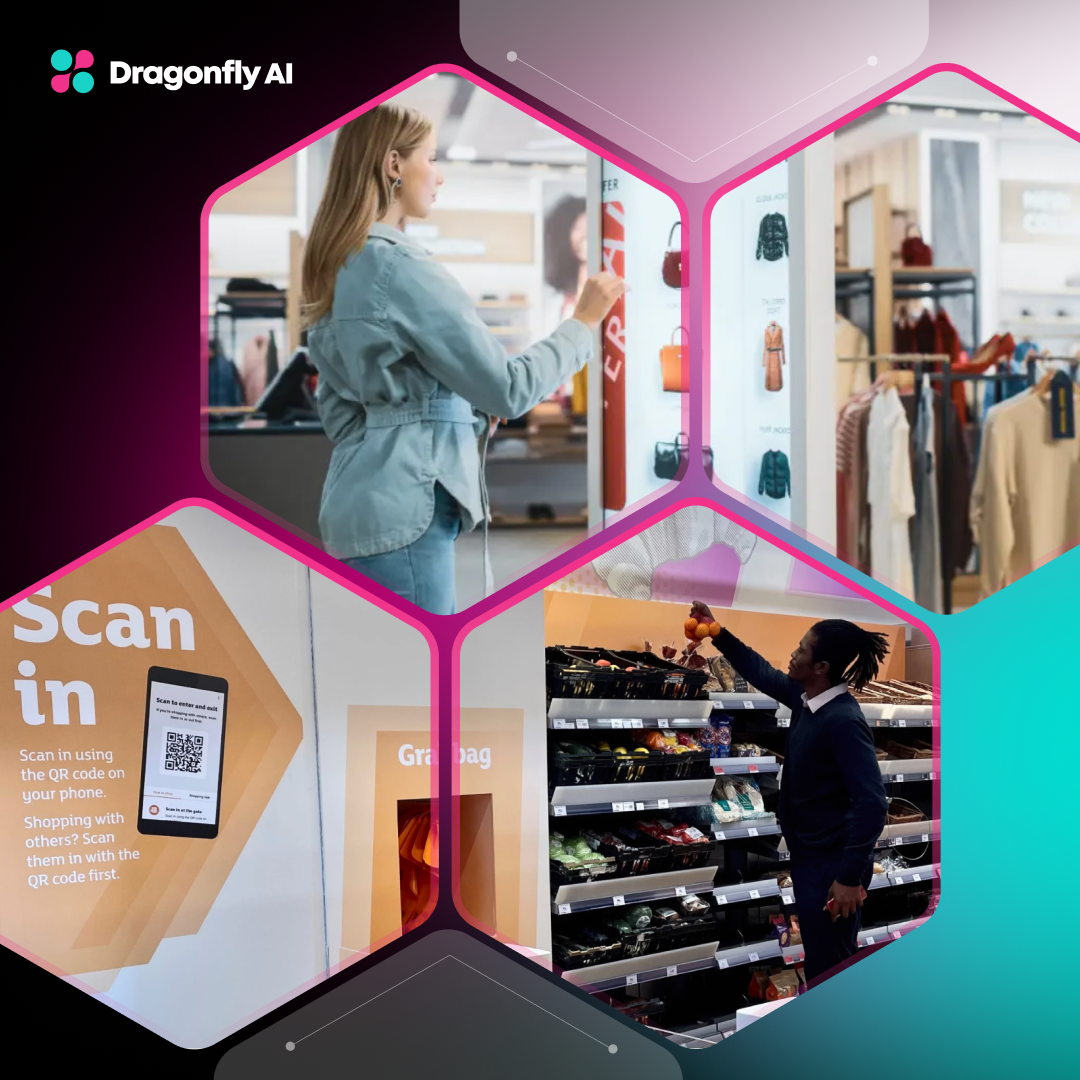Shoppable ads are starting to become commonplace, with a sweet little surge at the best possible time to make shopping even easier – Christmas.
These interactive ads give consumers the power to buy products directly from ads without leaving the website they are on. Whilst they kicked off on Google Images, YouTube, and Instagram, they are now merging into much more extensive narratives (see Walmart’s “Add to Heart” series).
Walmart’s shoppable series was the first of its kind but we can predict that this will become a much more popular avenue for brands to connect with its consumers.
Other brands leaning on shoppable ads include Home Depot, Amazon, Meta, and Snapchat. They’re a hot topic, but how are they redefining eCommerce?
The Rise of Shoppable Ads
The shift to dynamic shoppable ads from traditional online advertising is significant. Initially, it was all about the banner ads which then became more interactive including rich media and video content. From here the format transformed into shoppable ads.
Shoppable ads are becoming more and more popular, elevated by the fact that industry leaders such as Amazon, Meta, and Snapchat are leading the trend.
Amazon
Amazon offers a streamlined shopping experience by letting ads link directly to product pages. This makes the consumer journey that much easier to navigate because an action is so straightforward.
Meta
Meta leans on user data to create shoppable ads that are highly personalized. The special thing about what Meta does is that they offer a social dimension that makes shopping a shared experience that is much more engaging for the consumer.
Snapchat
With a younger audience overall, Snapchat integrates augmented reality (AR) features across its shoppable ads which allows users to virtually try products before purchasing. Ultimately throwing in an automatic solution to any barriers to purchase in the process.
Walmart and Home Depot's Approach
Nearly 60% of Americans will be making purchases via social media this year which gives retailers such as Walmart, and Home Depot ample reason to invest in shoppable ads.
Walmart
As we mentioned earlier, Walmart launched a 23-part fully shoppable romcom series at the end of November 2023 ahead of Christmas. This was the first of its kind, an absolute pioneer in merging two favorite holiday activities, watching movies and shopping!
This, however, was not Walmart’s first foray into shoppable ads. The retail giant prioritizes ease of use and relevance which is what drives its strategy. In 2022, Walmart partnered with Roku to bring shopping to life through TV ads.
What remains central to Walmart’s approach is ensuring the consumer is always the focus of its strategy.
Home Depot
In a similar way to Walmart, Home Depot has been experimenting with purchasing via a QR code within a mini-series. 57% of ad agency professionals believe that shoppable TV is the next frontier which is why so many brands are jumping on the bandwagon.
Home Depot differentiates from Walmart in that it focuses on the integration of its vast product line with a user-friendly online shopping experience. The retailer leverages advanced analytics to understand their audience more deeply.
Shoppable Ads on Social Platforms
Meta has done something remarkable thanks to its expansive network inclusive of Facebook and Instagram, it has made shoppable ads part of the social experience.
Across Meta platforms, shoppable ads are woven in through stories, posts, or videos. Transforming the platform into a marketplace makes it easier for brands to reach consumers more authentically. Shopping made it easier.
Snapchat is taking things more virtual and giving its younger demographic the ability to try before they buy using augmented reality (AR). This experiential dimension adds an entertainment factor whilst simultaneously informing buyers about the product.
The generation that frequents Snapchat is all about instant gratification which is exactly what Snapchat is working on by offering immediate engagement and creating a sense of urgency. Basically, the fastest way to increase sales across that demographic.
Shoppable ads on social platforms put brands right in front of consumers in a way like never before. Consumers can go from scrolling to purchasing instantly and without leaving the platform. Besides making the buying journey that much more efficient, maximizing shoppable ads on social platforms also capitalizes on impulse buying.
.png?width=1280&height=700&name=Blog%20image%202%20(14).png)
Impact on Consumer Shopping Behavior
The shopping experience has evolved significantly with digital, and now with AI, augmented reality, and access to a plethora of user data it has all gotten faster, more personal, and more immediate.
H3: Impulse Buying
Impulse buying has decreased over the last year to 6 purchases monthly for Americans but with the introduction of shoppable ads, this may start to pick up again.
When ads are placed within environments that consumers frequent, their comfort zones, such as their daily Instagram scroll it plays into the purchasing psyche that brands work so very hard to tap into.
Product Personalization
Traditional advertising casts a much wider net, albeit it tailored by demographics or psychographics, nothing quite understands the consumer like data analytics.
Thanks to the depth of data available, consumers can be shown products that align with their interests thus opening up new avenues for products to be showcased. Consider the ads that pop up when you’re scrolling, are they things you have searched for before? More and more, there will be products you weren’t interested in that find their way onto feed and more interestingly, that you actively engage with.
Digital Brand Loyalty
Shoppable ads resonate with consumers because that is what they are specifically designed to do which will ultimately generate more trust with the brands. Consumers will feel as if they are being seen and heard by the brands which will encourage them to connect on a deeper level with the brands.
Convenience and Immediate Gratification
The role of shoppable ads is to make it easier for the consumer to make purchases. The digital world moves at such a pace that consumers are constantly looking for ways to satisfy their immediate needs or desires. The beauty of shoppable ads is on-the-spot gratification thanks to a highly responsive purchasing experience.
.png?width=1280&height=700&name=Blog%20image%201%20(12).png)
Benefits for Retailers and Brands
It is clear that shoppable ads add a new dimension of joy for consumers but what about the retailers and brands behind them?
Deloitte found that half of millennials lose trust in a platform or channel if they see an ad that isn’t relevant to them, so whilst there are obvious benefits such as increased exposure, more impulse buying, and a new stream of customer data there are ways that it can go very wrong.
If we consider the context of cart abandonment for example, whereby in the second quarter of 2022 in the US, the cart abandonment rate was over 84%.
So, how do shoppable ads reduce this?
They remove at least two steps of the buying journey due to the direct link between the ad and the purchase. With traditional eCommerce funnels, there is too much space to reconsider. When this process is cut down to a single stage it removes the time to rethink decisions, because the purchase has already happened.
Beyond this, we have to consider the importance of brand loyalty being built. When consumers feel seen and heard, they will respond emotionally. Emotions build trust. This is a highly effective way for brands to connect with consumers where they are without hassling them or getting in their faces unnecessarily. Shoppable ads is merely a brand entering the room as opposed to making a big song and dance about it on the main stage.
Challenges and Considerations
With every new innovation, there is always room for teething problems. Shoppable ads are no different.
There are inevitable privacy concerns due to the level of data that is available. This poses multiple questions around governance and ethics which is an ongoing debate across many industries since AI has started playing an even bigger role in data analysis.
You also have to consider ad fatigue. This is a very real problem across the board and something that once you push too far it is increasingly challenging to pull it back to be valuable.
Finally, the balance between advertising and user experience. Are shoppable ads an exciting new way to connect with users? Yes. Is it very easy to make it too repetitive in a bid to reach more people, get more attention, and generate more revenue? Yes. As with everything, particularly when it comes to building relationships with consumers, it is critical to ensure the consumer remains a priority.
Key challenges surrounding implementing effective shoppable ads include;
- Data integration and management
- Personalization and targeting accuracy
- Seamless user experience
- Platform integration and compatibility
- Global and regional compliance
This is not an exhaustive list but definitely a consideration when brands are planning on diving into shoppable ads. As with everything, getting it right so that it is effective in the right ways is critical for success.
Future of eCommerce and Shoppable Ads
What does the future look like?
Personalization remains key
Shoppable ads will continue to offer a high level of customization. Consumers will be shown ads that resonate with their interests and also anticipate their needs based on shopping habits, moods, and lifestyle. This will improve conversion rates and build on user engagement.
AI integration
AI will allow a higher sophistication of targeting and optimization which will make ads more relevant and effective. Chatbot integration will provide real-time assistance which will make the buying journey even more linear.
Immersive experiences
The introduction of Augmented Reality (AR) and Virtual Reality (VR), as we have already seen from Snapchat, will mean even more immersive experiences for shoppers. These advancements will be more engaging, and practical and increase confidence in decision-making.
eCommerce strategies
Brands will start moving to more integrated strategies where advertising, customer engagement, and sales will happen in a dependent ecosystem. The focus will be on building seamless omnichannel experiences that serve convenience.
Conclusion
Shoppable ads are not a fleeting trend but a key innovation that will shift the face of eCommerce as we know it. Industry leaders such as Walmart, Amazon, Meta, and Snapchat are paving the way by pioneering new and exciting ways to bring the consumer to the product.
There are still challenges that cannot be ignored, and for success to keep growing it is imperative that these issues are considered and effectively solved.
The predictions about where shoppable ads will take us next year are bright, it is so gratifying to see data being used in such a consumer centric way and seeing more brands adopt this approach is going to be great to see as time goes on.
Shoppable ads have opened up a whole new world and the impact on sales, brand loyalty, engagement and eCommerce is set to be incredible.


.png?width=1280&height=700&name=Blog%20image%202%20(14).png)
.png?width=1280&height=700&name=Blog%20image%201%20(12).png)
